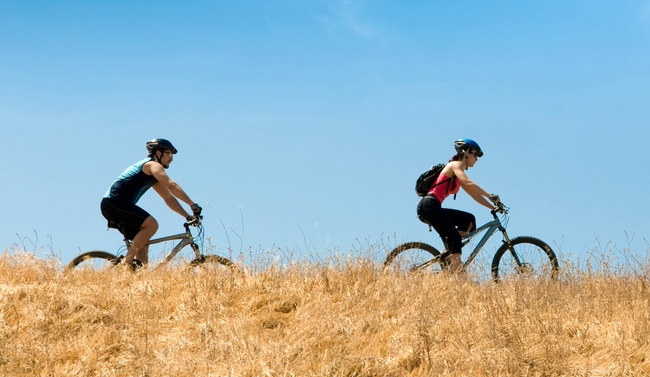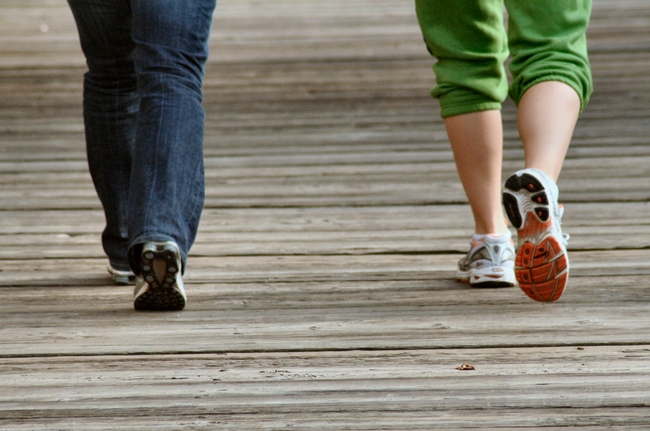There's something magical about exercise. It impacts the body in many different ways, and all of them are good.
Exercise burns calories, improves cardiovascular health, tones muscles, boosts mood, and now scientists are learning that it also thwarts one of the most-feared symptoms of aging, memory loss.
Researchers at UC Irvine are conducting a 15-site national study on the effects of aerobic exercise on adults with mild memory problems. They are hoping to document evidence that will allow physicians to write prescriptions for exercise.
“Exercise is medicine,” said James Hicks, director of UC Irvine's Center for Exercise Medicine and Sport Sciences.
To date, no effective drug therapies to treat dementia have been found.
“Since 2002, 420 clinical trials on drugs targeted for Alzheimer's have been launched. All of them failed,” Hicks said. “No drug will change its trajectory. But physical activity might.”
Another UC Irvine professor, Carl Cotman, agrees.
“That concept has exploded. That's where the future is: understanding how exercise alters disease trajectories and improves outcomes,” Cotman said.
Cotman's research showed that exercise increases production of a substance called brain-derived neurotrophic factor, which aides in learning and memory and facilitates connections among nerve cells. It's so critical to brain function that it has been dubbed “Miracle-Gro for the brain.”
“Exercise builds brain health,” Cotman said. “It makes you more efficient. You're thinking cleaner. It introduces a state of readiness.”
UC ANR educators encourage Californians to exercise
While scientists study the impact of exercise at the molecular level, UC Agriculture and Natural Resources nutrition educators continue to emphasize the importance of physical activity when they teach youth and families ways to improve their lives with healthy eating and movement.
UC ANR's Expanded Food and Nutrition Education Program (EFNEP) is offered in 24 counties in California. It is administered by UC Cooperative Extension offices. EFNEP educators help limited-resource families gain the knowledge, skills, attitudes and behavior necessary to choose nutritionally sound diets and improve their well-being.
Families who participated in the program have said that it transformed their lives for the better. They have changed what their family eats, switched to low-fat milk instead of whole milk and have fruit for snacks. They eat more vegetables and fruit and thaw meat and poultry in the refrigerator. Some walk daily, others play games with their children. Almost all use store ads and unit pricing to get the best shopping deals.
CalFresh Healthy Living, University of California is another nutrition education program administered by UCCE. It helps children and adults choose a healthy lifestyle by encouraging good food habits and decision making skills. Adult nutrition education is provided at no cost to low-income families. The youth nutrition education program provides support and resources to preschool through high school teachers in low-income schools to deliver nutrition and physical activity education in their classrooms.
CalFresh Healthy Living, UC helps families find parks in their neighborhoods so they can stay active, and shows how they can join sports team and locate public pools. The training acknowledges that it can be difficult to add exercise to busy lives, and helps participants overcome the barriers.
The Physical Activity Guidelines for Americans recommend:
- 2.5 hours of moderate physical activity per week, or 30 minutes five times per week
- Strength and resistance training two times per week
- Flexibility exercises two to three times per week
“Perhaps the most common barrier is a lack of time,” said CalFresh Healthy Living, UC nutrition program coordinator Austin Cantrell. “In order to implement an exercise routine into our lives, many of us will need to plan out our day and see where we can fit exercise into our schedule.”
An important thing to remember, Cantrell said, is that exercise doesn't have to happen all at once.
“If you exercise for 10 minutes three times throughout your day, you will have met your 30-minute requirement,” he said. “If we exercise for 10 minutes before we go to work, take a 10-minute walking break while at work and exercise for 10 minutes after work, we will meet our recommended amount of physical activity for the day.”
A way to save time is engaging in vigorous physical activity, which cuts exercise time recommendation to 75 minutes a week. How can you tell the difference between “moderate” physical activity and “vigorous” physical activity? Examples of moderate activity are walking or gardening. Vigorous physical activity includes running, sprinting or swimming.
“Typically, you will be able to hold a conversation during moderate activity, but will be unable to sing,” Cantrell said. “During vigorous activity, you will not be able to have a conversation without considerable shortness of breath or pausing.”
Some people feel more motivated to be physically active by combining it with activities they enjoy.
“Spend time with your children playing outdoors or playing sports,” Cantrell suggests. “Seek social support by joining walking clubs or recreational sports leagues.”
Sources:
Should doctors write prescriptions for exercise? By Shari Roan, UC Irvine
Overcoming barriers to exercise By Austin Cantrell, CalFresh Healthy Living, UC

